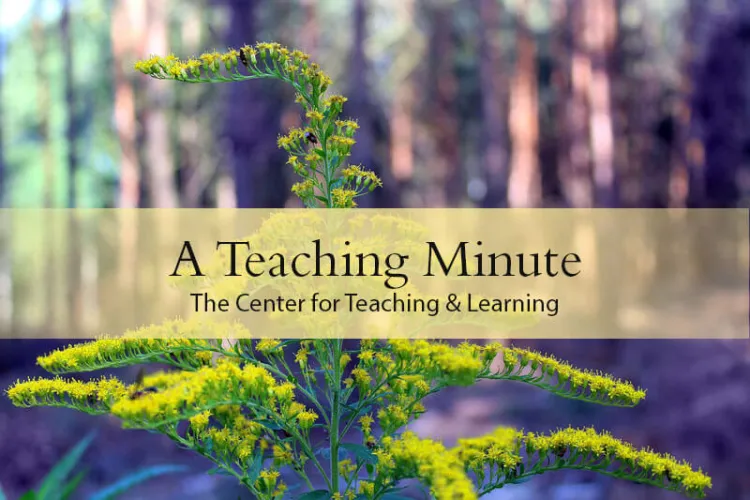
Transparent Assignments
Friday, 10/04/2024
As part of our continued fall focus on equity-minded teaching, we’re diving into the second principle of An Evolving Framework for Inclusive and Equitable Pedagogy: making learning goals clear and transparent.
Think about the last time you tried assembling furniture without clear instructions. Frustrating, right? Students feel the same way if their assigned work isn't clear to them. TILT (Transparency in Learning and Teaching) offers students that much-needed step-by-step guidance and clarity about your purpose and expectations for assignments and how you'll grade their work.
The positive impacts of TILT are well-documented. For example, Crosby and Short (2023) found that applying TILT principles improved student outcomes and deepened learning. Similarly, a national study found that this led to significant benefits for all students, with the largest gains for first-generation students, low-income students, and students of color (Winkelmes et al., 2016).
TILT in Action: Purpose, Task, and Criteria
- Purpose: Help students see the 'why.'
Students don’t always see how an assignment fits into the big picture. By clearly explaining its purpose, you help them connect the dots. For instance, a music assignment might say: “This assignment will provide practice with chord progressions, key for composing songs and developing improvisational skills.” - Task: Break it down.
TILT encourages explicit, step-by-step instructions so that students know exactly what to do. For example:- Participate in the data collection exercise during lab.
- Spend about 30 minutes looking at the patterns you see and decide what charts will represent them.
- Put the charts into a word document.
- If you need help with Excel charts, consult the help files in Brightspace.
Criteria: Provide a clear path.
When you outline grading criteria clearly, you give students a map for how to meet your expectations. Providing a rubric, checklist, and/or samples of student work, gives them the tools to self-assess their work instead of just “hoping for the best” or relying on prior experience.
Additional Resources
Join a Working Group
Building on these ideas, we at the CTL and Writing in the Disciplines invite you to be a part of a Fall TILT Working Group. This is a collaborative space to design assignments, receive feedback, and share TILT strategies. Details TBA.
Selected References
- Crosby, M., and Short, R. (2023). Positive impacts of TILT: Two professors’ journeys in creating more student-centered teacher education courses. Perspectives in learning, 20(1), 5.
- Winkelmes, M. A. (2023). Introduction to transparency in learning and teaching. Perspectives In Learning, 20(1), 2.
- Winkelmes, M. A., Bernacki, M., Butler, J., Zochowski, M., Golanics, J., and Weavil, K. H. (2016). A Teaching Intervention that Increases Underserved College Students' Success. Peer Review, 18.